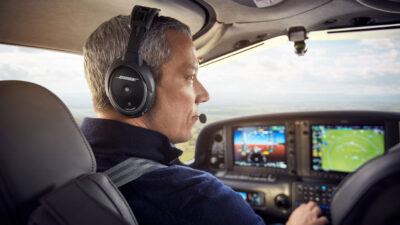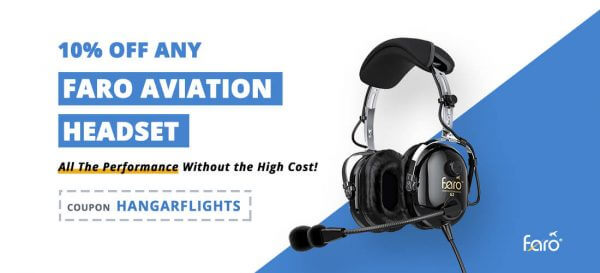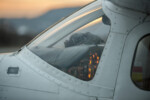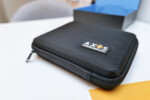7 Reasons Why You Should Buy a Noise-Canceling Aviation Headset
6 July 2021 | Updated on November 24, 2024
One of the most common questions we get from (student) pilots is, “Which aviation headset should I get? And should I buy a passive or active noise reduction headset?”.
The answer to the first question depends on the person asking and his/her specific needs and budget. The answer to the second question also depends on a few different factors, but in our opinion, it’s almost always a great idea to buy a noise-canceling aviation headset.
In the guide below, we will explain 7 reasons why you should buy a noise-canceling aviation headset, instead of a regular passive noise reduction headset.
What is Active Noise Reduction?
Active Noise Reduction is a process in which electronics are used to remove or suppress unwanted (aircraft) noise. By using little microphones, incoming noises are ‘read’ and an anti-noise signal is created to cancel out the noise, hence the name noise-canceling.
Since this method uses electronics, Active Noise Reduction (ANR) headsets are usually battery-or aircraft-powered. They use a filter to separate the wanted signal from the unwanted signals, usually below 300Hz. The separated noise is inverted and mixed with the original signal, which results in the noise and inverted noise-canceling each other.
Active noise reduction headsets can usually obtain a noise reduction of 10-20dB, which means at 20dB, the noise is only 1/100th of the original level. Since you don’t want to block wanted signals, like alerts or a sputtering engine, ANR headsets only block frequencies below 300Hz.
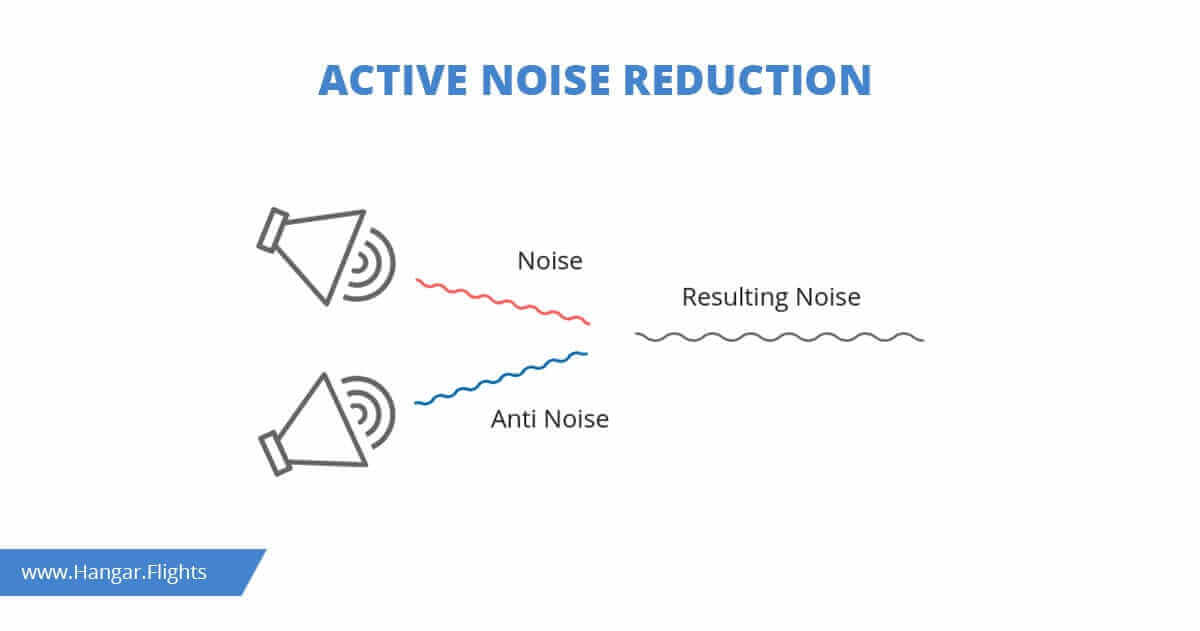
Passive Noise Reduction vs Active Noise Reduction
Passive Noise Reduction (PNR) aviation headsets have noise suppressing foam that fills the earcup cavity and passively reduces the noise by sealing off sounds that come from outside the headset. PNR headsets are the least expensive and can be purchased for anywhere between $60 and $600.
As mentioned above, Active Noise Reduction (ANR) aviation headsets actively reduce and cancel the noise by using electronics inside the headset to remove or suppress unwanted aircraft noise.
ANR headsets are in most cases more expensive than their passive noise reduction counterparts, but as you will read below, their advantages do offset and justify the slightly higher purchase price.
There is also a third category of noise rection, Dynamic Noise Reduction (DNR), which provides an extra level of noise-canceling by using digital electronic techniques to remove noise components from the incoming headphone signal. PNR headsets achieve this by digitizing signals in a series of numerical values, which are then processed to look for repetitive noise signals and remove noise components. These types of aviation headsets are less common.
Effects of Noise Exposure
In an FAA pilot safety brochure, two major effects of noise exposure are distinguished: Physiologic and Psychologic effects.
Physiologic Effects of Hearing Loss
- Ear discomfort: May occur during exposure to a 120 dB noise.
- Ear pain: May occur during exposure to a 130 dB noise.
- Eardrum rupture: May occur during exposure to a 140 dB) noise.
- Temporary hearing impairment: Unprotected exposure to loud, steady noise over 90 dB for a short time, even several hours, may cause hearing impairment. This effect is usually temporary and hearing returns to normal within several hours following cessation of the noise exposure.
- Permanent hearing impairment: Unprotected exposure to loud noise (higher than 90dB) for eight or more hours per day for several years, may cause permanent hearing loss. Permanent hearing impairment occurs initially in the vicinity of 4,000 Hz (outside the conversational range) and can go unnoticed by the individual for some time. It is also important to remember that hearing sensitivity normally decreases as a function of age at frequencies from 1,000 to 6,000 Hz, beginning around age 30
Psychologic Effects of Hearing Loss
- Subjective effects: Annoying high-intensity noise can cause distraction, fatigue, irritability, startle responses, sudden awakening and poor sleep quality, loss of appetite, headache, vertigo, nausea, and impair concentration and memory.
- Speech interference: Loud noise can interfere with or mask normal speech, making it difficult to understand.
- Performance: Noise is a distraction and can increase the number of errors in any given task. Tasks that require vigilance, concentration, calculations, and making judgments about time can be adversely affected by exposure to loud noise higher than 90 dB
7 Reasons why you Should buy a Passive Noise Reduction Aviation Headset
1. Prevent hearing loss
If you fly frequently, then it’s likely that you may one day experience some level of hearing loss. In fact, pilots have a higher incidence of hearing loss than the general population, as they are regularly exposed to much higher levels of noise, often for extended periods at a time.
Noise-induced hearing loss is a serious problem in the aviation industry.
A noise-canceling aviation headset will help protect your hearing, so you can continue to fly safely for years without risking damage to your hearing.
The physiologic and psychologic effects explained above illustrate the importance of using sufficient hearing protection.
2. High noise environments
In high noise environments, passive noise reduction is often not enough to sufficiently suppress loud sounds.
Active noise reduction headsets can usually obtain a noise reduction of 10-20dB, which means at 20dB, the noise is only 1/100th of the original level. Obtainable passive noise reduction is usually much less.
The combination of earplugs with earmuffs or communication headsets is recommended when ambient noise levels are above 115dB. Earplugs, combined with active noise reduction headsets, provide the maximum level of individual hearing protection that can be achieved with current technology.
3. Communication quality
When the ambient noise exceeds 85 dB, your ability to recognize words rapidly diminishes. Getting the communication audio signal significantly above the ambient noise is key to increased word recognition.
Active noise reduction systems reduce the masking effects of the frequency spectrum that your ear hears. The most effective systems will substantially improve your hearing and understanding by improving the clarity of audio communications you hear. Pilots who try an ANR headset for the first time notice these benefits almost instantly.
Studies have shown that we need a 9 dB difference between audio signals in our headset and ambient noise to achieve eighty-percent word recognition or better. This is typically expressed as Signal-to-Noise Ratio (abbreviated S/N or SNR). An S/N ratio of 12/15 decibels allows for 90% recognition rate.


4. Weight
Passive noise reduction headsets use simple noise isolation, a method of filtering out noise by relying purely on the hardware alone. This could take the form of earmuffs that are heavily padded or headphones designed to make a tight seal around the ears to drastically reduce noise. Because of this, these headsets are usually heavier and bulkier than ANR headsets.
Buying an ANR aviation headset will prevent your flight bag from becoming a pain to carry with you.
5. Psychologic effects and improving comfort
As mentioned above, PNR headsets are designed to make a tight seal around your ears, resulting in more clamping force on your head.
On short flights, this is not as noticeable, but on longer flights, the tight squeezing on your head can create discomfort and even result in headaches, vertigo, nausea, and even impair concentration.
6. Quality and durability
The usually higher price tag of ANR headsets comes with an additional advantage: their built quality is usually significantly better, resulting in a more durable headset that will last many years.
As the saying goes, you get what you pay for!
7. Extra features
The fact that active noise-canceling aviation headsets use a power source does have some additional advantages. One of them being the extra features ANR headsets are often equipped with, such as Bluetooth, audio mixing, advanced volume settings, and more.
The Bose A20, for example, offers the interesting option to mix different audio channels. When you are listening to music via Bluetooth, you can choose whether the music should be fully muted when there’s an ATC transmission, or if both signals should be mixed. Another level of flexibility, which can be great for many situations.
Some Great ANR Aviation Headsets we Recommend
To conclude this article, we’d like to show you some of the best and most popular ANR headsets you can buy in 2021!


$1,200.00
Buy now on Amazon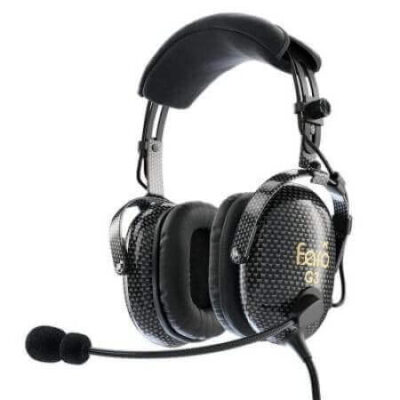

$620.99 $689.99


$749.00 



$949.00 

If you want to read more about aviation headsets, what you should look for, and which headset models are the best to buy, we recommend checking out our guide with The Best Aviation Headsets and How to Pick the Right one!





















